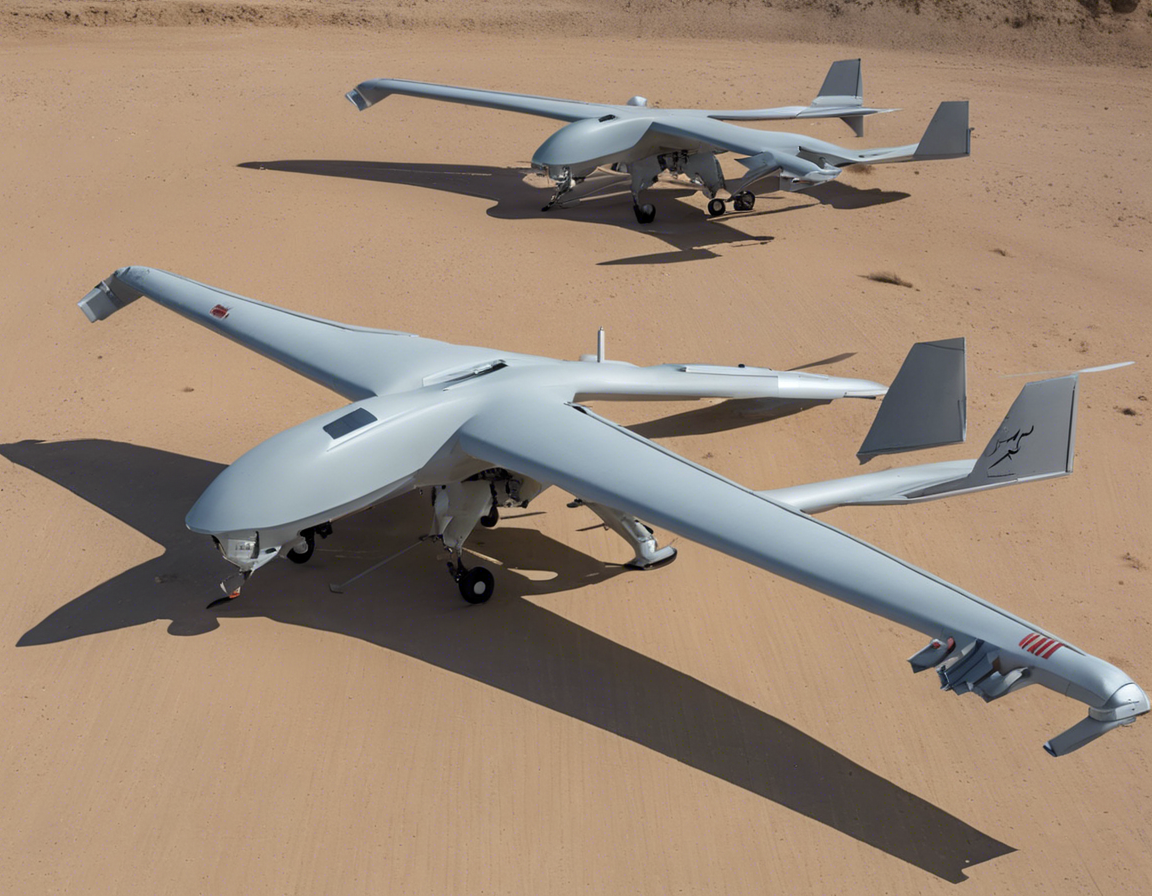Iranian Israeli drones are quickly becoming a groundbreaking technology in the military and defense industry. As both Iran and Israel continue to develop and enhance their drone capabilities, the world is witnessing a new era of unmanned aerial vehicles (UAVs) that are reshaping the dynamics of modern warfare. With Iran and Israel being at the forefront of drone technology, the influence of Iranian Israeli drones is rapidly increasing on a global scale.
The Evolution of Iranian Israeli Drones
History and Background
Iran has been actively advancing its drone program over the past two decades, with a focus on both surveillance and combat capabilities. The Islamic Republic of Iran has showcased a variety of drones, ranging from small reconnaissance UAVs to larger armed drones capable of carrying out precision strikes. On the other hand, Israel has been a pioneer in drone technology, with its defense industry producing some of the most advanced UAVs in the world. Israel Aerospace Industries (IAI) and Elbit Systems are two of the key players driving Israel’s drone development.
Collaboration and Controversies
The collaboration between Iran and Israel on drone technology might come as a surprise to many, given the geopolitical tensions between the two countries. However, there have been instances where Iranian drones have shown similarities to Israeli designs, raising speculation about technology transfer or reverse engineering. The proliferation of drone technology in the Middle East has also raised concerns about potential conflicts involving Iranian Israeli drones.
The Significance of Iranian Israeli Drones
Strategic Impact
Iranian Israeli drones have the potential to significantly impact regional and global security dynamics. The capabilities of these drones, including long-range surveillance, intelligence gathering, and precision strikes, have implications for military operations, counterterrorism efforts, and border security. The use of drones in conflicts such as the Syrian Civil War and the Israeli-Palestinian conflict has demonstrated their strategic importance in modern warfare.
Technological Advancements
Both Iran and Israel have been investing heavily in drone technology, leading to advancements in drone design, autonomy, payload capacity, and communication systems. Iranian Israeli drones are equipped with state-of-the-art features such as stealth technology, artificial intelligence, and real-time data transmission, making them more effective and versatile on the battlefield. The integration of drones with other military assets, such as fighter jets and ground forces, has further enhanced their operational capabilities.
Current Developments and Future Trends
Regional Arms Race
The proliferation of Iranian Israeli drones has triggered a regional arms race, with other countries in the Middle East seeking to acquire or develop similar capabilities. Saudi Arabia, Turkey, and Egypt are among the countries that have invested in drone technology to enhance their military capabilities and strengthen their defense posture. The increasing use of drones in conflicts in the region has underscored the importance of aerial superiority in modern warfare.
Regulatory Challenges
The growing use of drones, especially in conflict zones, has raised concerns about the need for regulations and international agreements to govern their use. Unmanned aerial vehicles have the potential to violate airspace, infringe on privacy rights, and pose risks to civilian populations if not properly controlled. International efforts to establish norms and rules for the responsible use of drones are crucial to prevent misuse and ensure compliance with humanitarian law.
Frequently Asked Questions about Iranian Israeli Drones
1. Are Iranian Israeli drones used for surveillance only, or do they have combat capabilities?
Iranian Israeli drones are designed for both surveillance and combat operations. They are equipped with sensors for intelligence gathering and reconnaissance, as well as weapons systems for carrying out precision strikes.
2. How do Iranian Israeli drones compare to other UAVs in terms of technology and performance?
Iranian Israeli drones are known for their advanced technology, including stealth features, AI integration, and long-range capabilities. They are considered among the most sophisticated UAVs in the world.
3. What are the main concerns surrounding the proliferation of Iranian Israeli drones in the Middle East?
The main concerns include potential misuse of drones for military aggression, the risk of drone attacks on civilian targets, and the impact of drones on regional security dynamics and stability.
4. How are Iran and Israel addressing the ethical and legal implications of using drones in warfare?
Both countries have their own regulations and guidelines for the use of drones in military operations. However, there is ongoing debate about the ethical and legal implications of drone warfare, especially regarding civilian casualties and the proportionality of drone strikes.
5. What are the strategic advantages of using Iranian Israeli drones in military conflicts?
Iranian Israeli drones provide military forces with enhanced situational awareness, precision targeting capabilities, and the ability to conduct standoff attacks without putting personnel at risk. They can also be used for counterterrorism operations and border surveillance.
In conclusion, the rising influence of Iranian Israeli drones is reshaping modern warfare and security landscapes, with significant implications for regional stability and global security. As these drones continue to evolve and proliferate, it is essential for policymakers, military leaders, and the international community to address the challenges and opportunities posed by this disruptive technology.
